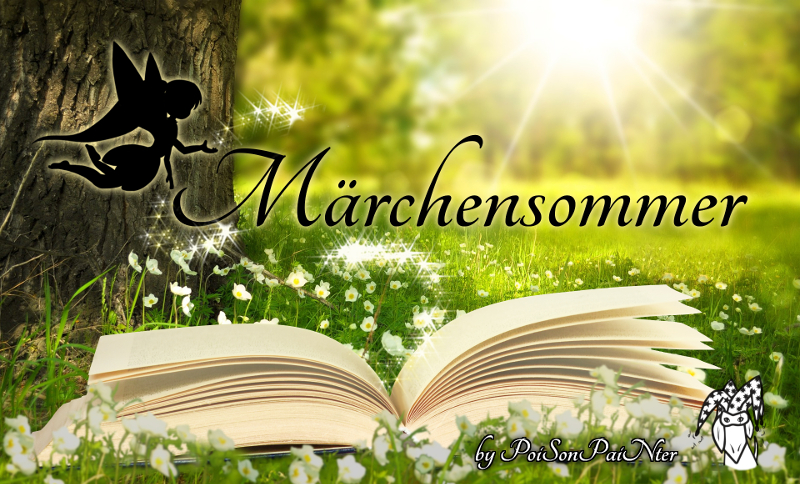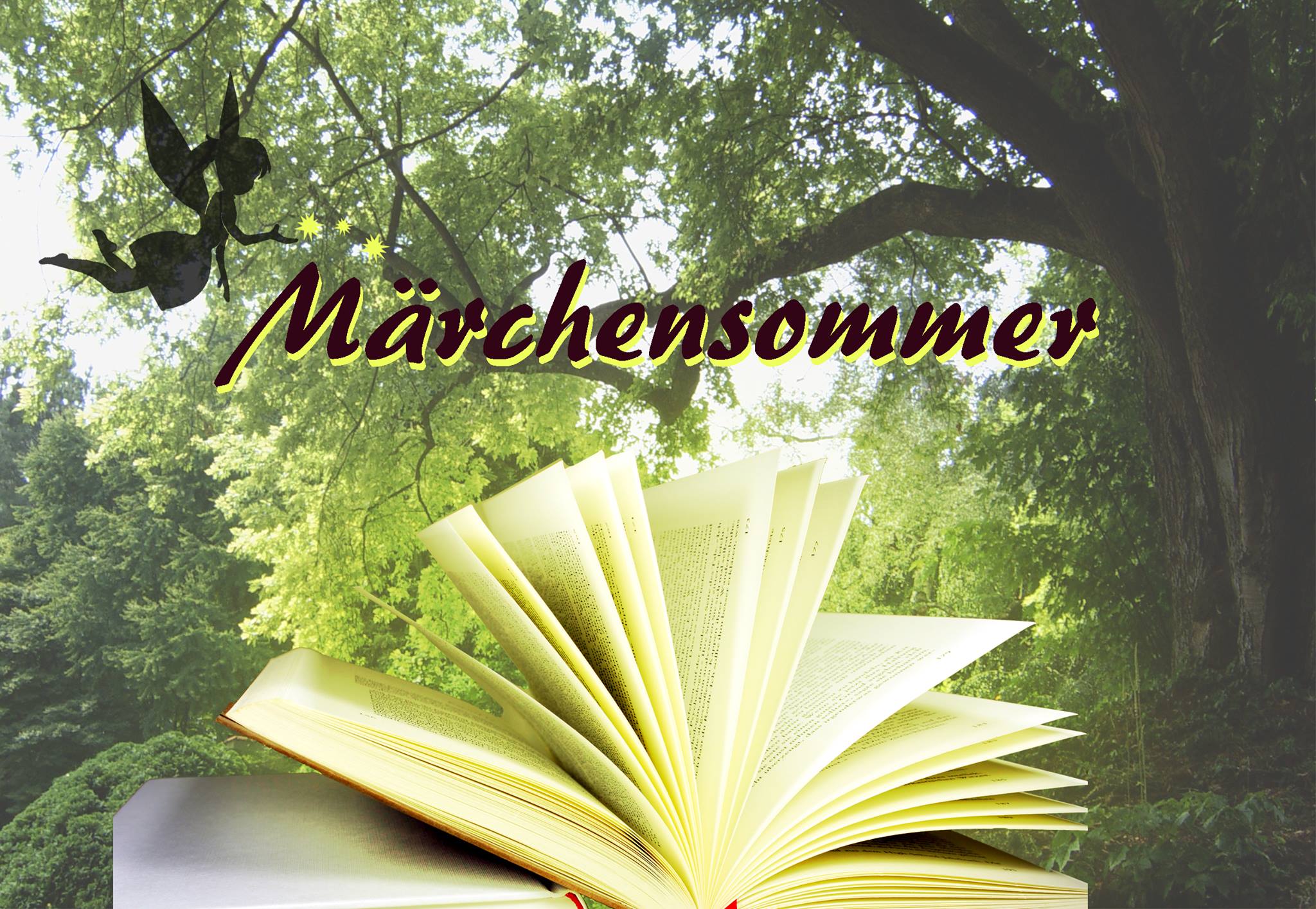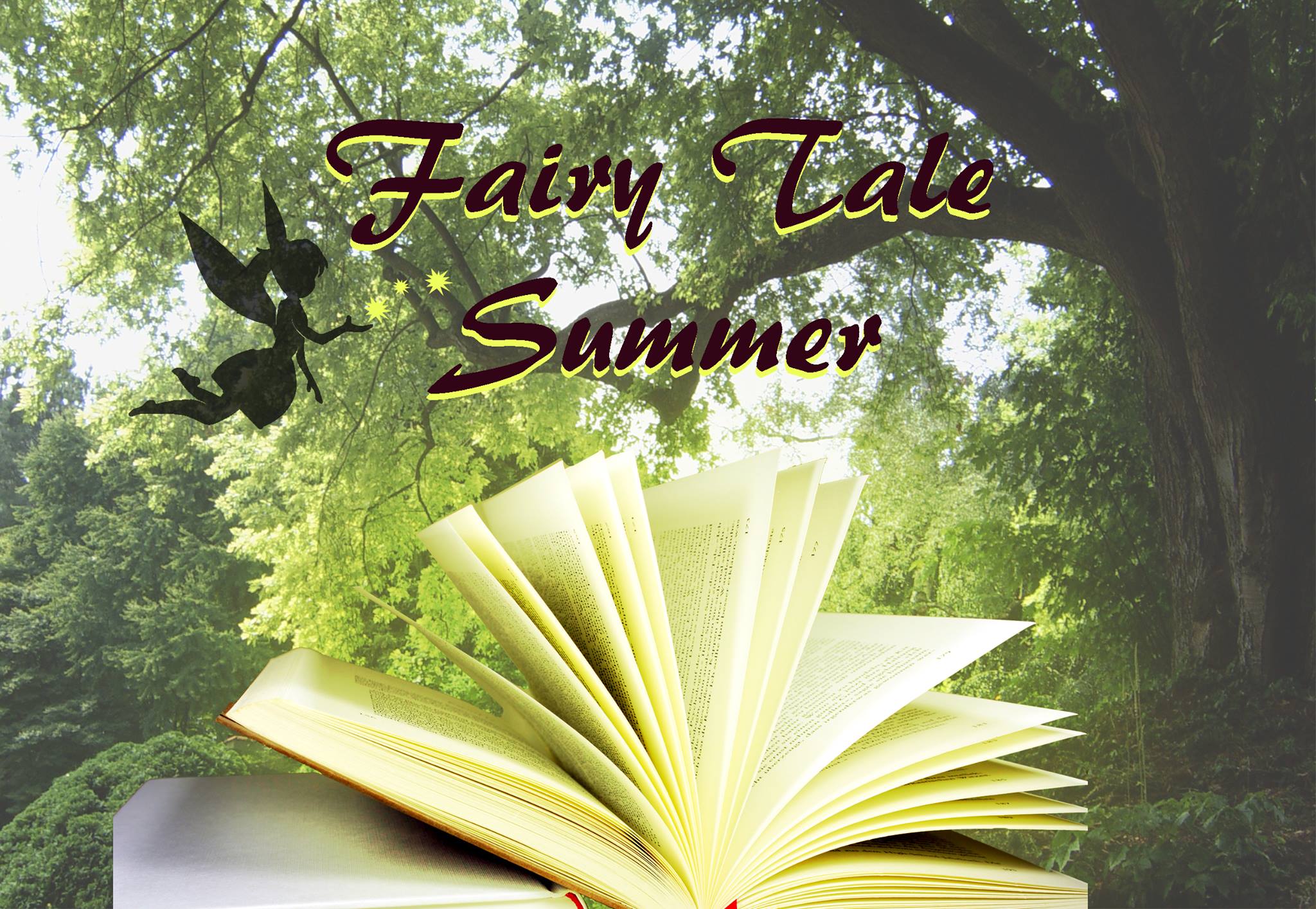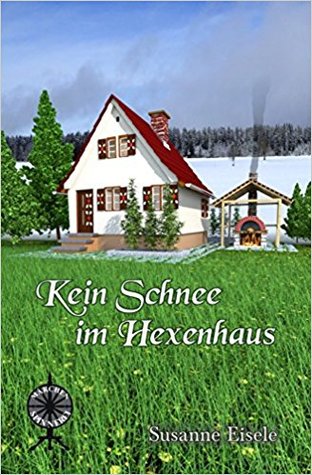Letzte Woche hat Katherina bereits anfangen euch etwas zu einer meiner Lieblingsfiguren zu erzählen, heute folgt der zweite Teil ihres Gastbeitrags.
Grimm’sche Hexe und Baba Jaga – zwei Mal Hexe? – Teil 2
Ihr habt erfahren woher sie und ihr Name stammen, wie sie aussieht und was sie so für Fähigkeiten hat. Heute geht es weiter mit:
Behausung
Die Grimm’schen Hexen haben in unterschiedlichen Märchen unterschiedliche Behausungen. So lebt die Hexe aus „Hänsel und Gretel“ im Pfefferkuchenhaus, das gleichzeitig Behausung und Falle ist. Die Hexe in „Jorinde und Joringel“ dagegen besitzt gleich ein ganzes Schloss voller Singvögel. Die Behausung der Hexe hängt also von ihrer Funktion im jeweiligen Märchen ab. In einem der wenigen Märchen mit Hexenmeister wird die Behausung gar nicht erwähnt, nur, dass es eine gibt und scheinbar die Menschen wissen, wo sie sich befindet, um ihr Kind dem Hexer in die Lehre zu geben, wie in „Der Gaudieb und sein Meister„.
Abgesehen davon befinden sich die Häuser der meisten Hexen im Wald. Ähnlich wie der Zaun als Trennung zwischen Menschenwelt und magischer Dämonenwelt fungiert, ist der Wald als Abgrenzung zum Dorf zu verstehen – die magische Welt, über die eine Hexe Macht hat.
Baba Jagas Behausung dagegen ist immer gleich. Es handelt sich hierbei um ein Haus auf einem Hühnerbein, umringt von einem Zaun aus Totenschädeln. Laut einigen Forschern ist das Hühnerbeinhaus ein Überrest altslawischen Glaubens, als Baba Jaga noch eine tierische – und keine menschliche – Gestalt hatte. Die Totenschädel symbolisieren, dass sie teils im Totenreich steht – wer also sich in ihr Haus begibt, übertritt damit auch symbolisch die Schwelle ins Reich der Toten. Wenn also ein Recke sich im Zuge der Heldenreise eines Märchens bei ihr aufhält, ist das oft sinnbildlich die Entsprechung der Jenseitsfahrt in der klassischen Heldenreise der antiken Mythen.
Anders als bei der Hexe, ist der Wald um ihr Haus herum allerdings nicht magisch, weil Baba Jaga dort wohnt. Der Wald ist immer magisch und Baba Jaga als Waldhüterin ist das Wesen, das man besänftigen muss, um sicher dort zu sein. Denn in den Vorstellungen der alten Slaw*innen war grundsätzlich jeder Bereich magisch und von Geistern bevölkert – egal ob es sich um das eigene Haus, das Dorf oder den Bereich außerhalb handelte. Nur dass für unterschiedliche Bereiche unterschiedliche Wesen zuständig waren. Diese Vorstellungen leben in abgeschwächter Form auf dem Lande teilweise weiter oder werden im Zuge der Besinnung auf alte, vorsowjetische Traditionen wiederbelebt.
Bedeutung
Baba Jaga ist eine mehrdeutige Figur. Laut Vladimir Ja. Propp hat sie drei Gesichter:
- Die Schenkende, die den Held*innen ein magisches Pferd oder einen anderen magischen Gegenstand übergibt
- Die Kindsräuberin (wie u.a. in „Wilde Schwäne“ und „Baba Jaga„)
- Die Kriegerin, gegen die sich der Held im Kampf behaupten muss, um zu einer höheren Bewusstseinsstufe aufzusteigen
Diese Dreiernatur hängt mit mehreren Dingen zusammen. Zum einen gilt Baba Jaga in der Folklore als Herrin des Waldes, die besänftigt werden muss, wenn man den Wald gefahrlos nutzen/durchschreiten möchte. Als solche ist sie also ein Überbleibsel der vorchristlichen slawischen Überlieferungen. Zum anderen kommt hier die ursprüngliche Natur der vorchristlichen Gottheiten und mystischen Frauengestalten zum Tragen, die sowohl Gutes als auch Böses in einer Person verbanden.
Um die Bedeutung der Grimm’schen Hexe zu thematisieren, muss man weiter ausholen und die Geschichte der zauberkundigen Frauen an sich im europäischen Raum betrachten. Während zauberkundige Frauen in der Frühantike noch ambivalent – also gut wie schlecht – sein konnten, nahm das Ansehen schon zur Römerzeit immer weiter ab. Bereits im Zwölftafelgesetz im antiken Rom standen Schadenszauber jeder Art unter Todesstrafe. Was freilich niemanden daran hinderte, solche beispielsweise im Tempel der Isis in Auftrag zu geben. Im Laufe der Zeit wurde zudem das Wissen heilkundiger Frauen zunehmend stigmatisiert, was letzten Endes in der Hexenverfolgung mündete (um es stark vereinfacht auszudrücken).
Der Effekt ist zweigleisig – aus den Dämonen und Göttinen der alten Geschichten werden Menschenfrauen. Gleichzeitig verlieren Zauberinnen alle ihnen zugeschriebenen positiven Eigenschaften. Bis ins achtzehnte Jahrhundert gehörten Hexen nicht in Geschichten, da sie für die Menschen durchaus Realitäten darstellten. Mit der Verbrennung der letzten Hexe in Deutschland – 1775 – ändert sich das. Da Hexen nicht mehr Teil der gelebten Realität sind, kann die Märchenhexe sich von einigen der herrschenden Vorstellungen lösen und zu etwas Eigenem werden. Sie ist dabei eine Mischung aus den vorchristlichen Vorstellungen der Zauberfrau und dem Hexenbild von Mittelalter und früher Neuzeit.
Ihre Funktion ist dabei meist die eines Kinderschrecks: In den meisten Märchen versucht sie, Kinder zu sich zu locken, um sie zu verzaubern oder zu essen. Seltener sind die Gegner*innen Jugendliche oder junge Erwachsene (wie bei Jorinde und Joringel).
Einige Forscher*innen sehen in der Märchenhexe eine ausschließlich böse Figur (so Max Lüthi) oder als Figur, die gegen alle Gesetze handelt und somit als abschreckendes Beispiel dient, wie ein Mensch nicht zu handeln hat. Somit soll ihr grausames Ende Kindern aufzeigen, was passiert, wenn sie sich nicht an die Gesetze des guten Zusammenlebens handeln. Die drastischen Strafen dienen der Prävention.
Psychologisch gesehen können Hexen auch als die schlechten Seiten eines Menschen gelesen werden, die am Ende des Märchens zu vernichten sind. So wird zwar die Stiefmutter von Schneewittchen nicht explizit als Hexe benannt, hat jedoch spätestens im letzten Drittel des Märchens ihre äußeren und inneren Eigenschaften, während sie in der Verkleidung der hässlichen Alten auftritt. Indem die Hexe sich in heißen Schuhen zu Tode tanzt, „verbrennt“ die negative Seite in der Persönlichkeit von Schneewittchen, die somit mit dem Prinz an der Seite erwachsen werden kann.
Interessanterweise sind Hexenfiguren grundsätzlich regional. Die Rolle, die in deutschen Märchen oft eine Hexe einnimmt, nimmt in vielen Märchen aus anderen Ländern ein*e Menschenfresser*in ein. In einigen Ländern fehlen Hexen völlig und werden durch Feen oder hexenähnliche Geschöpfe der eigenen Mythologie ersetzt.
Fazit
Auch wenn auf den ersten Blick die Grimm’sche Hexe und die russische Baba Jaga viele Gemeinsamkeiten haben, haben die beiden Figuren sehr unterschiedliche Entstehungsgeschichten und Bedeutungsspektren. Dass sie sich jedoch einander annähern, liegt nicht zuletzt daran, dass auf der ganzen Welt ungefähr zur gleichen Zeit mit dem Niederschreiben der Märchenstoffe begonnen wurde. Und auch wenn es damals kein Internet gab, tauschten sich die Menschen rege international über ihre Arbeit aus. So würde es mich nicht wundern, wenn sich die zwei Archetypen nicht mit der Zeit dadurch einander angenähert hätten, sodass exotischere Ausformungen der Baba Jaga (wie die als Dreiergruppe) verdrängt wurden.
In jedem Fall sind beide Gestalten vielschichtige und interessante Figuren, die auch die folgenden Generationen nicht loslassen werden.
Die Autorin
Katherina Ushachov zog im Alter von sechs Jahren aus dem sonnigen Odessa nach Deutschland. Zwanzig Jahre später machte sie Vorarlberg zur neuen Wahlheimat. Sie schreibt seit der Schulzeit, weil sie ohne das Schreiben nicht mehr leben kann. Wenn die freie Lektorin nicht gerade an einem ihrer Romane arbeitet, textet sie für mehrere gemeinschaftlich geführte Blogs oder erzählt auf ihrer Homepage vom Alltag als junge Autorin.
Homepage: Keller im 3. Stock
Lektorat: Phoenixlektorat
Weltenbau: Weltenschmiede
Facebook: Katherina Ushachov – Autorin
Twitter: @evanesca
Morgen wird es mal ein bisschen zeichnerisch … neben den Bilderrätseln, die ihr auch weiterhin bei Trimagie und Drachengeschichten und Nordlichter auf Facebook lösen könnt.
Anne/PoiSonPaiNter
_________________________________
Lies auf Deutsch
Last week Katherina already started to tell you something about one of my favorite characters, today you can read the second part of her guest post.
Grimm’s Witch and Baba Jaga – Twice a Witch? – Part 2
You learned where she and her name come from, what she looks like and what her abilities are. Today we continue with:
Dwelling
Grimm’s witches have different dwellings in different fairy tales. Thus the witch from „Hansel and Gretel“ lives in the gingerbread house, which is both a dwelling and a trap. The witch in „Jorinde and Joringel„, on the other hand, owns a whole castle full of songbirds. The witch’s dwelling depends on her function in the respective fairy tale. In one of the few fairy tales with a sorcerer, the dwelling is not mentioned at all, only that there is one and apparently people know where it is to teach their child to the sorcerer, as in „The Thief and His Master„.
Apart from that, most witches‘ houses are in the forest. Just as the fence acts as a separation between the human world and the magical demon world, the forest is to be understood as a boundary to the village – the magical world over which a witch has power.
Baba Jaga’s dwelling, on the other hand, is always the same. It is a house on a chicken leg, surrounded by a fence of skulls. According to some researchers, the Chicken House is a remnant of ancient Slavic belief, when Baba Jaga still had an animal – and not a human – form. The skulls symbolize that she is partly in the realm of the dead – so whoever enters her house symbolically crosses the threshold into the realm of the dead. So when a hero stays with her during a fairy tale’s hero’s journey, this is often symbolically the equivalent of the afterlife journey in the classical hero’s journey of ancient myths.
Unlike the witch, the forest around her house is not magical because Baba Jaga lives there. The forest is always magical and Baba Jaga as a forest keeper is the being you have to soothe to be safe there. For in the ideas of the old Slavs, every area was basically magical and populated by spirits – regardless of whether it was their own house, the village or the area outside. Only that different beings were responsible for different areas. Some of these ideas live on in the countryside in a diluted form or are being revived in the course of reflecting on old, pre-Soviet traditions.
Meaning
Baba Jaga is an ambiguous figure. According to Vladimir Ja. Propp she has three faces:
- The giver who gives the heroines a magic horse or other magic object
- The Child Thief (as in „The Magic Swan Geese“ and „Baba Jaga„, among others)
- The warrior, against whom the hero has to fight in order to advance to a higher level of consciousness.
This tripple nature is connected with several things. On the one hand, Baba Jaga is considered in folklore as the mistress of the forest, who must be calmed down if one wants to use the forest safely. As such, it is a remnant of pre-Christian Slavic traditions. On the other hand, there is the original nature of the pre-Christian deities and mystical female figures, who combined both good and evil in one person.
In order to address the meaning of Grimm’s witch, one must go further and look at the history of magical women in Europe. While magical women in early antiquity could still be ambivalent – good as bad -, the reputation already decreased further and further in Roman times. Already in the Twelve Tables Act in ancient Rome, all kinds of harmful spells were punishable by death. Which, of course, did not prevent anyone from commissioning such in the temple of Isis, for example. In the course of time, the knowledge of healer women was increasingly stigmatized, which ultimately led to witch hunts (to put it very simply).
The effect is twofold – the demons and goddesses of ancient stories become human women. At the same time, sorceresses lose all the positive qualities attributed to them. Until the eighteenth century witches did not belong in stories because they were realities for people. With the burning of the last witch in Germany – 1775 – this changed. Since witches are no longer part of lived reality, the fairy tale witch can detach herself from some of the ruling ideas and become something of her own. It is a mixture of the pre-Christian ideas of the sorceress and the witch image of the Middle Ages and early modern times.
Their function is usually that of a child’s fright: In most fairy tales she tries to attract children to enchant or eat them. Rarer are the opponents young people or young adults (as with Jorinde and Joringel).
Some researchers see the fairy tale witch as an exclusively evil figure (according to Max Lüthi) or as a figure who acts against all laws and thus serves as a cautionary example of how a person should not act. Thus their cruel end is to show children what happens when they do not abide by the laws of good coexistence. The drastic penalties are for prevention.
Psychologically speaking, witches can also be read as the bad sides of a person to be destroyed at the end of a fairy tale. Although Snow White’s stepmother is not explicitly named as a witch, she has her external and internal characteristics in the last third of the fairy tale at the latest, while she appears in the disguise of the ugly old woman. By dancing herself to death in hot shoes, the witch „burns“ the negative side in the personality of Snow White, who can thus grow up with the prince by her side.
Interestingly, witch figures are basically regional. The role often played by a witch in German fairy tales is played by a man-eater in many fairy tales from other countries. In some countries witches are completely absent and are replaced by fairies or witch-like creatures of their own mythology.
Conclusion
Even if the Grimm witch and the Russian Baba Jaga have a lot in common at first glance, the two figures have very different origin stories and spectra of meaning. However, the fact that they are converging is not least due to the fact that the recording of fairytale materials began around the same time all over the world. And even if there was no Internet at that time, people actively exchanged their work internationally. So it wouldn’t surprise me if the two archetypes hadn’t come closer together over time, displacing more exotic forms of the Baba Jaga (like those as a group of three).
In any case, both figures are multi-layered and interesting figures that will go unnoticed by future generations either.
The Authoress
Katherina Ushachov moved from the sunny Odessa to Germany at the age of six. Twenty years later she turned Vorarlberg into her new chosen home. She is writing since school times, as she can’t live without writing any more. When the free Copy Editor isn’t working on one of her novels, she writes for several collaboratively lead Blogs or talks about her every day life as young authoress on her homepage.
Homepage: Keller im 3. Stock
Copy Editor: Phoenixlektorat
Worldbuilding: Weltenschmiede
Facebook: Katherina Ushachov – Autorin
Twitter: @evanesca
Tomorrow it will be a bit graphical…
Anne/PoiSonPaiNter






